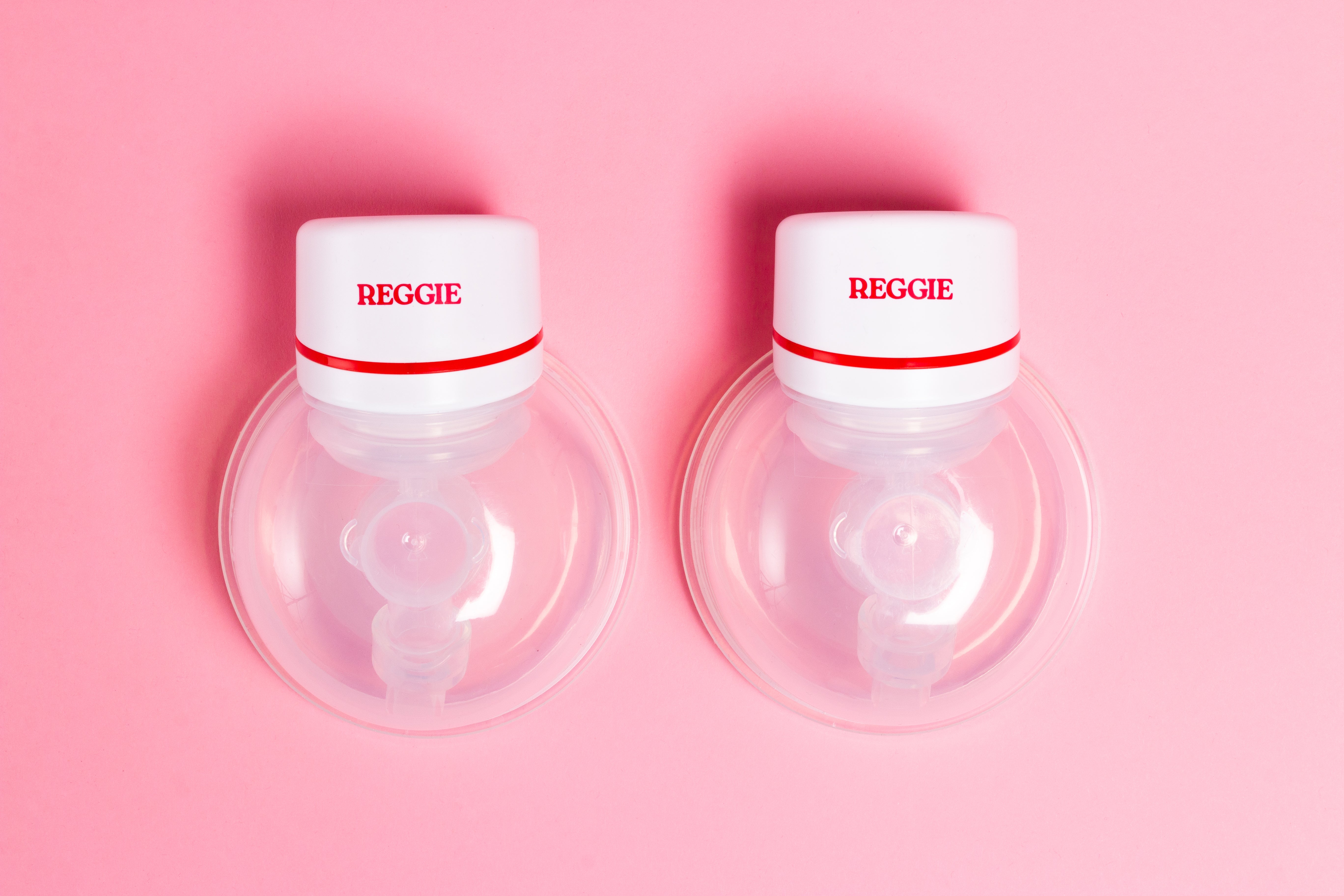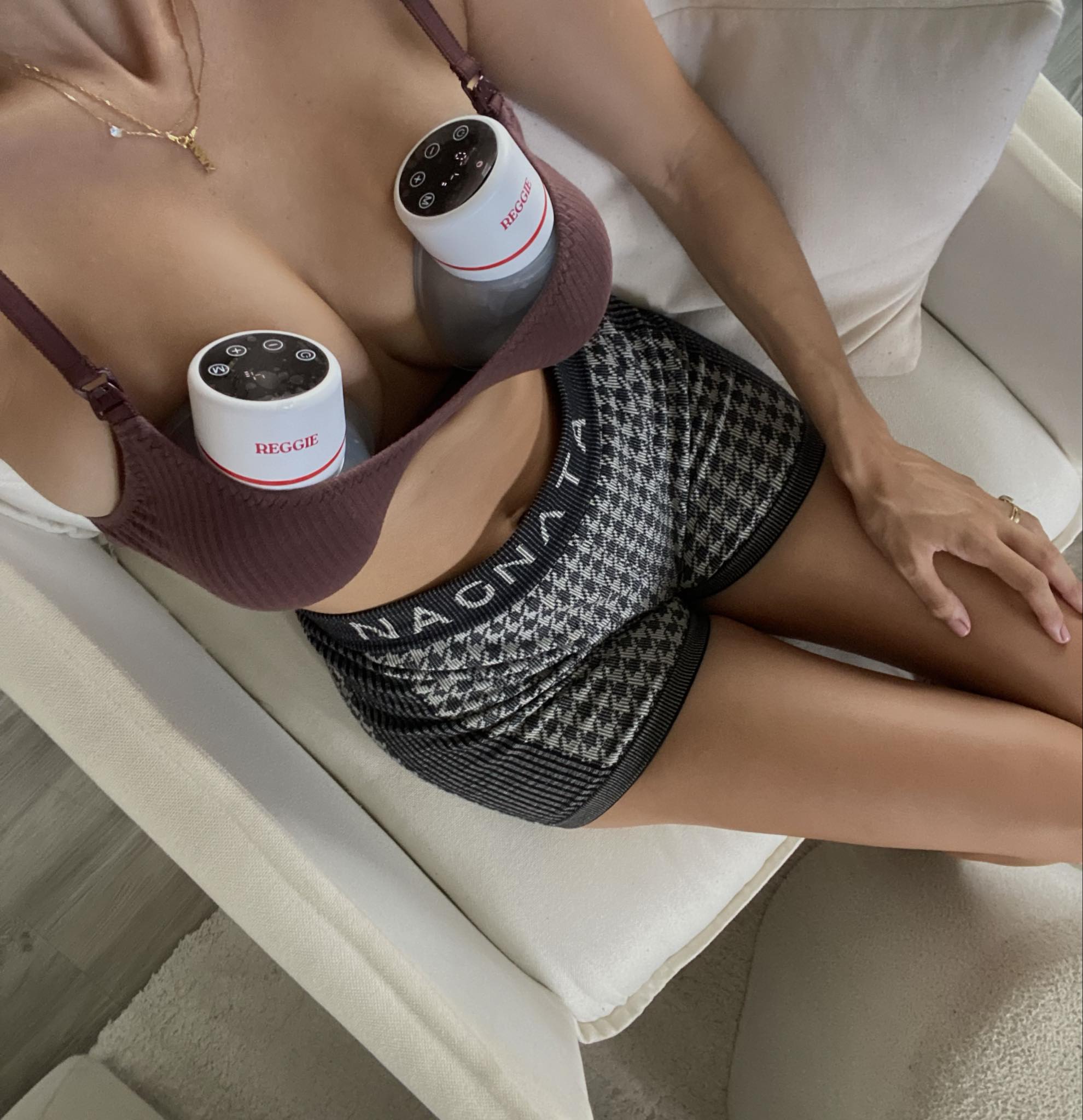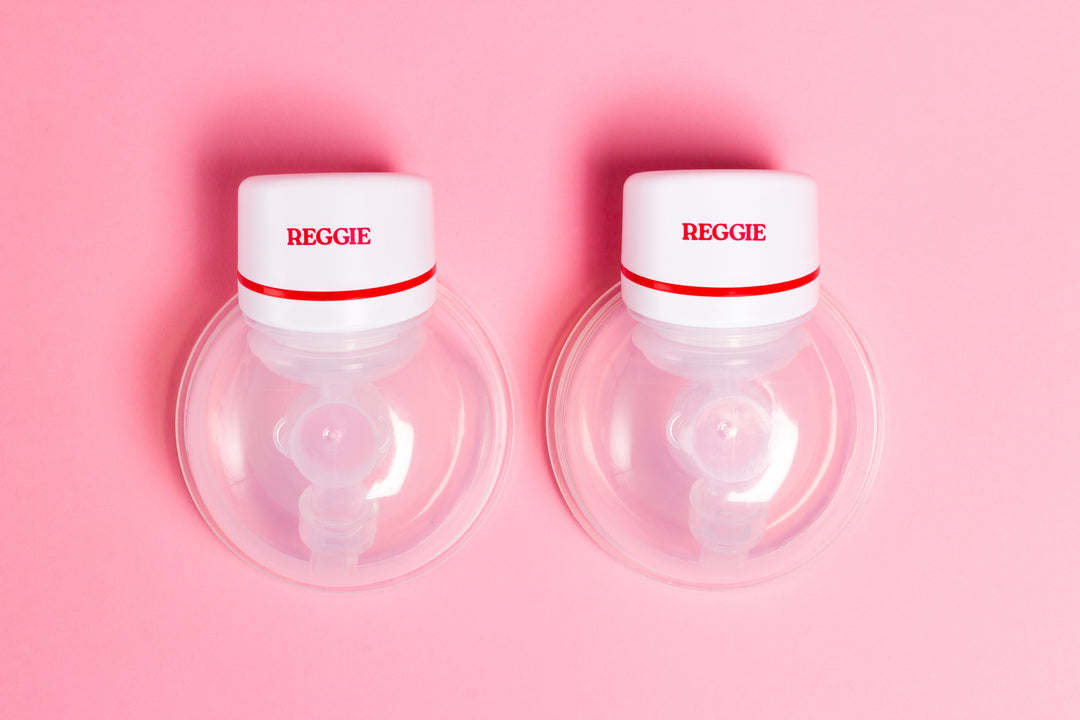Ultimate Guide to Breast Pump Battery Care
Want your breast pump to last longer and work reliably every time? Proper battery care is key. Here's a quick rundown of what you need to know:
- Charge Right: Always use the recommended charger and avoid fast chargers to prevent overheating.
- Keep It Cool: Store and charge your pump in a cool, dry place - away from heat and moisture.
- Battery Levels Matter: Keep the charge between 20%–80% for better longevity. Avoid letting it drain completely or overcharging.
- Stay Clean: Wipe battery contacts regularly and never submerge the pump in water.
- Travel Smart: Carry backups like portable battery packs or car chargers when on the go.
Quick Comparison of Battery Types:
| Battery Type | Features | Example Models |
|---|---|---|
| Built-in Rechargeable | No replacements needed | Spectra S1, Wisemom Pro |
| AA Battery Pack | Replaceable, versatile | Medela Pump In Style |
| Custom Battery Pack | Tailored for specific pumps | Wearable pumps |
Follow these simple steps to keep your pump running smoothly and avoid interruptions during your pumping sessions. Read on for detailed tips and troubleshooting advice.
Charging Your Breast Pump
Keeping your breast pump charged correctly helps maintain battery life and ensures consistent suction. Here’s how to do it right.
First-Time Charging Steps
Before using your pump for the first time, make sure to fully charge it. Follow these simple steps:
- Keep the pump turned off while charging.
- Plug the power adapter into a wall outlet.
- Connect the adapter to the pump's motor unit.
- Allow up to 4 hours for the initial charge to complete.
- Once charged, unplug both ends.
After this first charge, stick to a regular charging routine.
"When it comes to rechargeable devices, some of the most common battery issues come from using fast chargers or high-watt chargers that can overheat and reduce battery life over time." - Imani Malaysia
Regular Charging Schedule
To keep your pump's battery in good shape, follow these charging guidelines based on the type of pump:
| Pump Type | Charging Requirements |
|---|---|
| Single Electric | 5V 1A charger |
| Double Electric or Dock | 5V 2A charger |
| Wearable | Refer to model-specific instructions |
Try to keep the battery level between 20% and 80% for better longevity. Letting the battery drain completely can lead to damage over time.
Preventing Battery Damage
Charging your pump properly can help avoid damage and extend its lifespan.
"Overcharging is when you continue to charge something after it is fully charged - some products have a mechanism to stop once the item has reached 100%, but many do not, and pumps can actually overheat." - Jessica Anderson, IBCLC, CLC, Genuine Lactation
Here are some tips to protect your pump's battery:
- Use only the charger recommended by the manufacturer.
- Charge in a cool, shaded area away from direct sunlight.
- Unplug the charger as soon as the battery is full.
- Avoid fast chargers or high-watt alternatives.
- Never charge in hot environments or near heat sources.
If your pump becomes warm while charging, unplug it immediately and reach out to the manufacturer’s support team for assistance.
Battery Care and Storage
Keeping Battery Contacts Clean
To keep your breast pump working efficiently, make sure the battery contacts stay clean. After each use, gently wipe the electrical unit with a soft cloth or a clean paper towel. Avoid submerging the unit in water or any liquids, and never use microwave sterilisers - they can damage the electronics .
Proper Storage Tips
Storing your pump correctly helps preserve its battery life and functionality. Choose a clean, dry spot away from direct sunlight and moisture. A bedroom cupboard or storage closet with moderate temperature works well.
Steps for Long-Term Storage
If you're storing your pump for an extended period, follow these steps to protect the battery and pump:
-
Clean Before Storing
Wash all pump parts following CDC guidelines, then let them air-dry completely for at least 24 hours. -
Reassemble the Pump
After cleaning, wash your hands and reassemble the pump to keep all parts together and ready for use. -
Travel-Friendly Storage
When flying with your pump, take a few precautions:- Bring the pump as carry-on luggage instead of checking it.
- Pack a portable battery pack for extra power .
- Carry documentation explaining the airline's breastfeeding equipment policies .
Fixing Battery Problems
Battery Warning Signs
Keep an eye out for these signs that your battery might need attention:
- Red light when pressing buttons: Indicates the battery is below 20%.
- Flashing red light: Battery is under 10% - charge it right away.
- Reduced suction or unresponsive controls: Likely a low battery; check the charge before troubleshooting further.
Extending Battery Life
Follow these tips to keep your pump's battery working efficiently:
- Make sure the cable and adapter are securely connected. Test the outlet with another device to confirm it's working.
- Reset the pump according to the manufacturer's instructions to fix minor glitches.
- Keep the pump in a room-temperature environment while charging and storing it.
"When it comes to rechargeable devices, some of the most common battery issues come from using fast chargers or high-watt chargers that can overheat and reduce battery life over time." - Imani Malaysia
Battery Replacement Guide
If basic troubleshooting doesn't solve the problem, replacing the battery might be necessary.
- For replaceable rechargeable batteries: Always follow the manufacturer's guidelines for replacement.
- For disposable batteries: Swap them out as soon as the low battery light comes on.
- For wearable pumps (like Reggie Baby models): Check the user manual or reach out to customer support for help with integrated battery systems.
Stick to the battery types recommended by the manufacturer to ensure your pump runs smoothly.
sbb-itb-08733ff
Pump-Specific Battery Care
Different breast pump styles require specific battery care to ensure consistent performance. Here’s a breakdown of care tips tailored to each type of pump.
Wearable Pump Batteries
Wearable pumps, like the Reggie Baby, come with built-in USB‑C charging for ease of use. These compact pumps typically provide 80–100 minutes of operation on a full charge, depending on the suction level.
Tips for maintaining wearable pump batteries:
- Charge them for 2.5 hours during the first use.
- Always use the supplied USB‑C chargers to charge both units at the same time.
- Keep an eye on battery levels to prevent reduced performance.
- Be aware that some models, such as Lansinoh, may take around 4 hours to fully charge and cannot be used while charging.
Standard Electric Pump Batteries
Standard electric pumps vary in power sources. Some, like the Medela Smartpump 3.0, come with rechargeable batteries, while others, such as the Signature Pro, rely on AA batteries.
Best practices for standard electric pump batteries:
- Avoid leaving rechargeable pumps plugged in overnight.
- Limit charging sessions to 3–4 hours to maintain battery health.
- For AA-powered pumps, keep spare batteries handy to avoid interruptions.
- Hospital-grade pumps usually need to be plugged into mains power due to their higher energy consumption.
Travel Pump Batteries
Travel pumps are designed for portability and often include dual-voltage functionality for use abroad. Proper battery care ensures they remain dependable while on the go.
Travel battery care tips:
- Carry a portable backup battery for emergencies.
- Bring a car charger for use during road trips.
- Opt for models with built-in rechargeable batteries for convenience.
- Check the pump’s voltage compatibility when travelling internationally.
These pump-specific suggestions work alongside the general battery care advice provided earlier, helping you get the most out of your breast pump.
Battery Life Tips
Power-Saving Settings
Many modern breast pumps come with settings designed to make the most of battery life. Typically, these pumps have two modes: letdown (massage) and expression.
Begin your session with a low suction in massage mode, then gradually increase as milk begins to flow . For Spectra pumps, switch to expression mode and select the highest vacuum speed you're comfortable with, starting at cycle 54 .
For example, the Lansinoh Wearable Pump can run for around 3 hours on a full charge .
Using these power-saving options can help, but it’s also smart to have a backup plan to avoid interruptions.
Backup Power Methods
When you're on the go, having a reliable backup power source ensures you can pump without interruptions.
External Battery Packs vs Car Adapters
| Feature | External Battery Pack | Car Adapter |
|---|---|---|
| Mobility | Highly portable, works anywhere | Limited to vehicles |
| Power Source | Rechargeable or replaceable batteries | Vehicle power outlet |
| Best For | Travel and multiple locations | Frequent car use |
| Voltage Requirements | Must match pump (usually 9V or 12V) | Typically vehicle-compatible |
Both options can be lifesavers, especially when paired with good battery care practices.
Other handy tips include keeping a manual pump as a backup and carrying extra AA batteries if your pump uses them. For pumps with built-in rechargeable batteries, a car charger can be a great addition for mobile use .
For Spectra S2 pumps, the TalentCell 12V rechargeable pack is a great choice, delivering suction power comparable to mains electricity .
Additionally, some pumps, like the Spectra S1 PLUS and Motif Duo, have LED screens for low-light use. Reducing screen brightness when possible can help stretch battery life .
Battery Safety Guidelines
Moisture and Heat Protection
It's essential to keep your pump's battery dry and cool to avoid damage. As Pumpables explains: "Moisture can ruin electronics by causing corrosion on the battery or circuit board" .
Here are some tips to protect your pump's battery:
- Store the pump in a container with a dehumidifying sachet.
- Avoid high-humidity areas like bathrooms or basements.
- Make sure all pump components are completely dry before storing them.
- Keep the pump in a cool, dry place.
Extreme temperatures can cause plastic parts to crack or warp .
Safe Charging Equipment
Always use the recommended charger for your pump to avoid damage and maintain your warranty.
| Pump Model | Charging Specifications | Approved Chargers |
|---|---|---|
| Pumpables Genie Advanced | 5V | Official charger or compatible phone charger |
| Willow 3.0 | Proprietary | Official Willow charger only |
| Reggie Baby | USB-C | Included USB-C cable |
Important: Using an unofficial charger could void your warranty and damage your pump. Check your pump's manual for exact charging instructions.
When your battery reaches the end of its life, make sure to dispose of it properly.
Battery Disposal Rules
Australia has strict battery disposal rules, supported by the B-cycle national recycling scheme . Proper disposal is essential because batteries contain toxic metals that can harm the environment.
Where to Recycle Breast Pump Batteries:
- Aldi supermarkets (free recycling for standard batteries)
- Battery World locations
- Bunnings stores (accepts various battery types)
- Coles stores (expanding battery recycling program)
Tip: Tape the battery terminals before recycling to reduce fire risks .
Did you know? Up to 95% of battery materials can be recycled into new batteries or repurposed for other industries . Without recycling, battery waste in Australia could exceed 100,000 tonnes by 2036 . For pumps with built-in batteries, contact the manufacturer for disposal options or take-back programs.
Summary
Quick Care Tips
Taking care of your breast pump's battery is essential for reliable use during every session. Keep the battery level between 20% and 80% to help extend its lifespan .
| Pump Type | Recommended Charger | Charging Environment |
|---|---|---|
| Single Pump | 5V 1A | Cool, ventilated area |
| Double Pump | 5V 2A | Away from direct sunlight |
| Charging Dock | 5V 2A | Room temperature |
If you notice reduced suction, it likely means the battery is running low - recharge as soon as possible .
"When it comes to rechargeable devices, some of the most common battery issues come from using fast chargers or high-watt chargers that can overheat and reduce battery life over time" - Imani Malaysia
These tips are a great start, but always align them with your pump's specific instructions for the best results.
Following Brand Instructions
Each breast pump has unique battery care requirements, so it's important to follow the manufacturer's recommendations to keep it working well. Beyond the basics, sticking to brand-specific instructions can further protect your pump's battery.
Here are a few key points to keep in mind:
- Check your user manual for the right charger type and care instructions.
- Use only approved chargers and follow cleaning guidelines from the manual.
- Store your pump as directed by the brand to avoid damage.
While general care is helpful, brand-specific rules are essential for pumps with unique features. For example, wearable pumps like those from Reggie Baby need proper charging and storage to ensure they perform reliably throughout your expressing journey.







Leave a comment